Listen to the Podcast
On the show this week we break down a recent television commercial and look at how "Food Cinematography" can be challenging and a bit of fun at the same time.
There are quite a few genres in commercial cinematography and excelling at food cinematography can help you get steady and fun work. Great food cinematography is a balancing act between the details (lighting, framing, movement) and finding a great food stylist.
Patreon Podcast: Painting Yourself Into a Corner
In this edition of the Patreon Supporter Podcast we look at lighting a room vs. lighting a subject. In today's world of commercial production time and budget need to stretch further than ever before.
Part of the job of the cinematographer is ensuring that as much of the production value makes it on screen as possible and that happens through time management and planning ahead.
I answer a few questions from our Patreon supporters, talk Easyrig tactics, monitors, and more.
To listen to the Patreon Podcast simply click on the button below:
Food Cinematography - The Breakdown
The commercial was set in a suburban family home with a mother, father, and daughter all engaged in activities around the house. The spot ends with a reveal of the product and a pack shot with the mother enjoying the goods.
Oh and we had to make a summer commercial feel warm and inviting in the middle of a Melburnian winter rain storm.
The Technical Info - Camera Gear & Lighting Kit
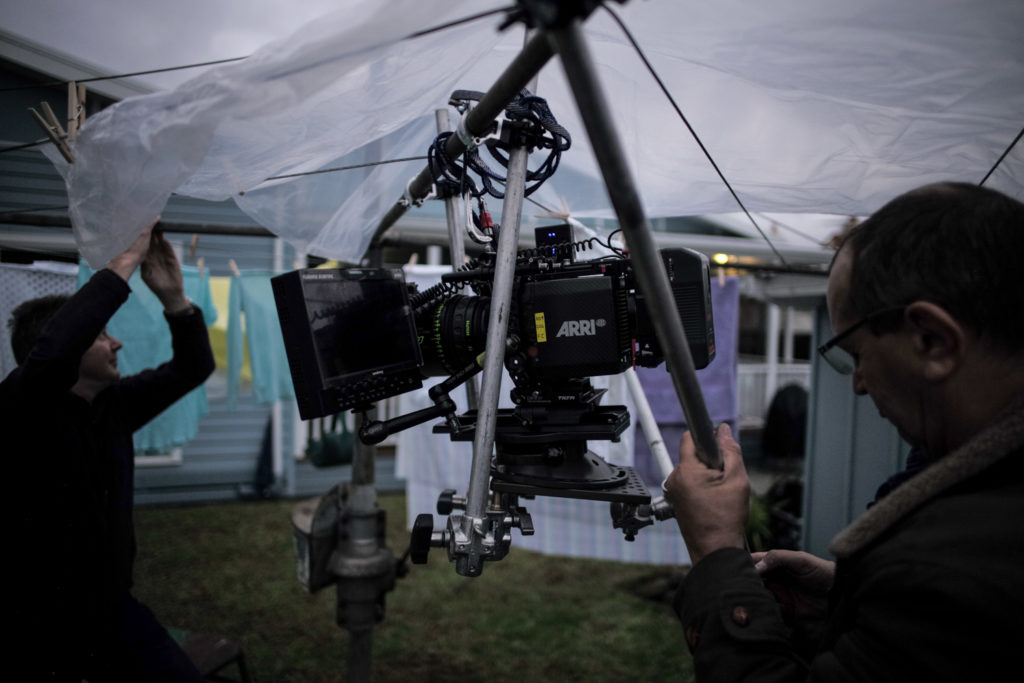
Camera Gear
- Arri Alexa Mini - 3.2k ProRes 444
- Arri Master Primes - 16, 21, 27, 32, 40, 65mm
- Arri WCU-4 - Wireless Follow Focus System
- Arri LMB-25 - Clip On Matte Box
- TrueND Filter Set - 4x5.6" IRND Filters (.3 - 2.1)
- OConnor 2575 - Fluid Head
- Flanders BM090 - 9" On Board Monitor
- Easyrig Vario 5 - Handheld Camera Solution
Lighting Gear
- Arri M40 - HMI Lamp
- Arri M18 - HMI Lamp
- Arri Skypanel S60 - RGBW LED with Softbox
- 12x12 Bleached Muslin - Bounce Textile
- 4x4 Hi-Lite - Diffusion Frame
- 12x12 Full Grid - Interior Diffusion
- Various Poly boards & 4x4 Floppies
Food Cinematography - The Set Ups
The Clothes Line - Day Exterior
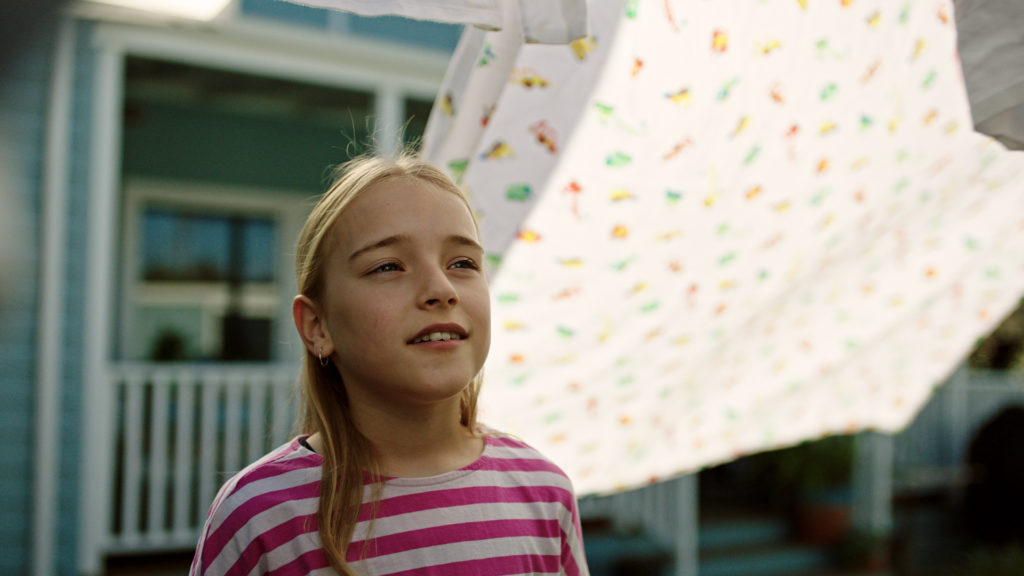
The Shot
We started the spot with a young girl looking up at a spinning clothes line. We moved the camera in and out of the clothes blowing in the breeze.
The Lighting
We were moving quickly used a 4x4 Poly for the some level on her key side and then added an overhead frame to take the dge of the sun.
Closer in we positioned lighter or darker materials to get bounce were we needed it and neg where we wanted less light.
The Results

Behind the Scenes
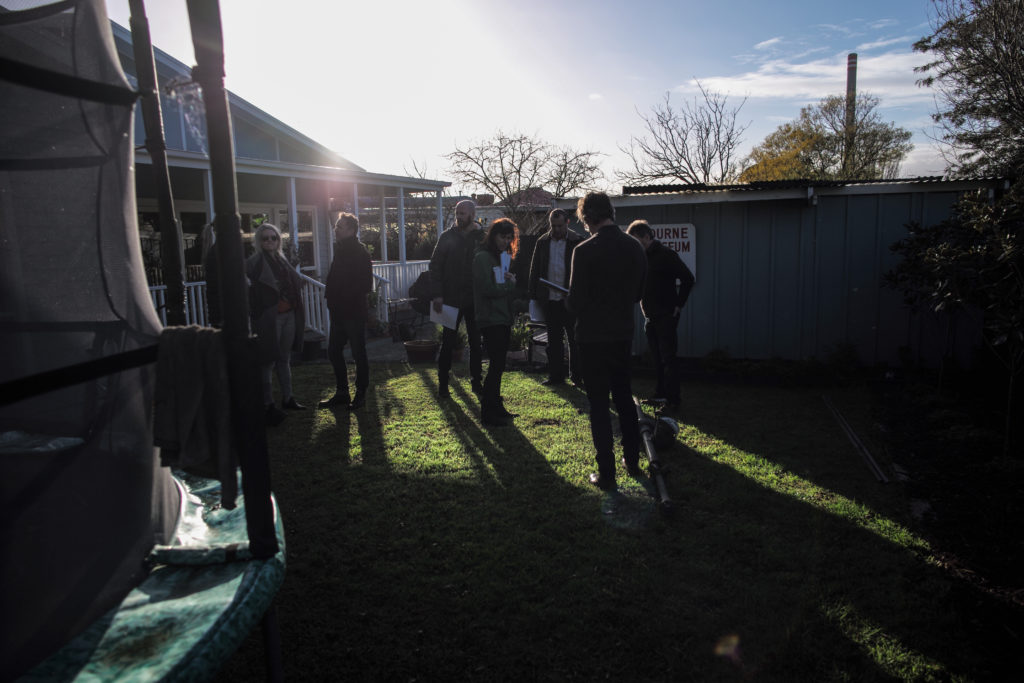
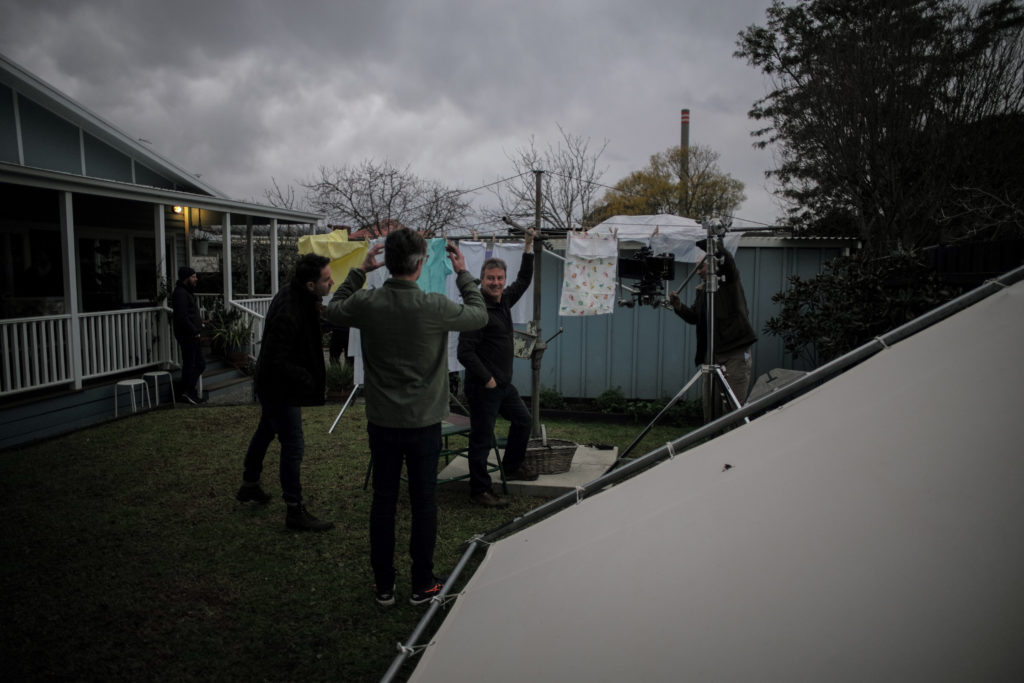
More of the Same - Amongst the Clothes
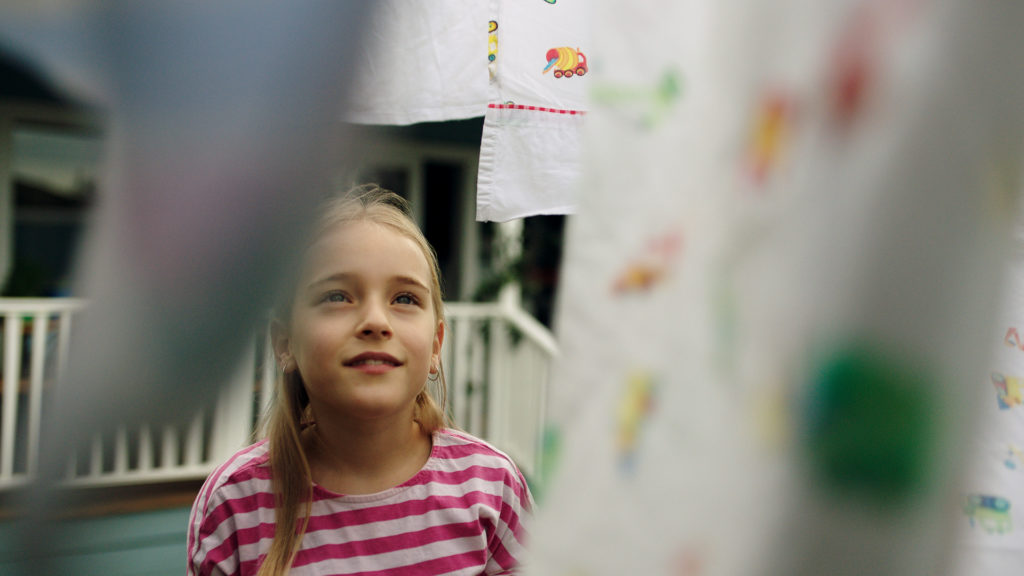
The Shot
This shot was the same set up as before with a slight variation in the position of the camera and a lens change.
The Lighting
The only change in the lighting from before is that the sun had completely gone away and that left us with no need for the overhead diffusion as the sky light was already soft enough.
We left the poly just for some ambient kick.
The Results

The Spinning Rig - On the Line
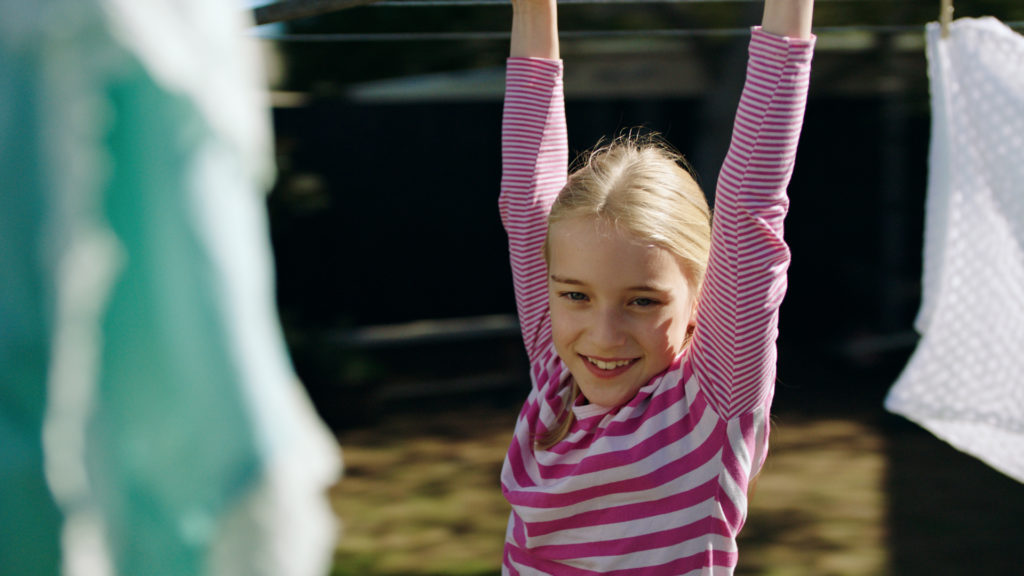
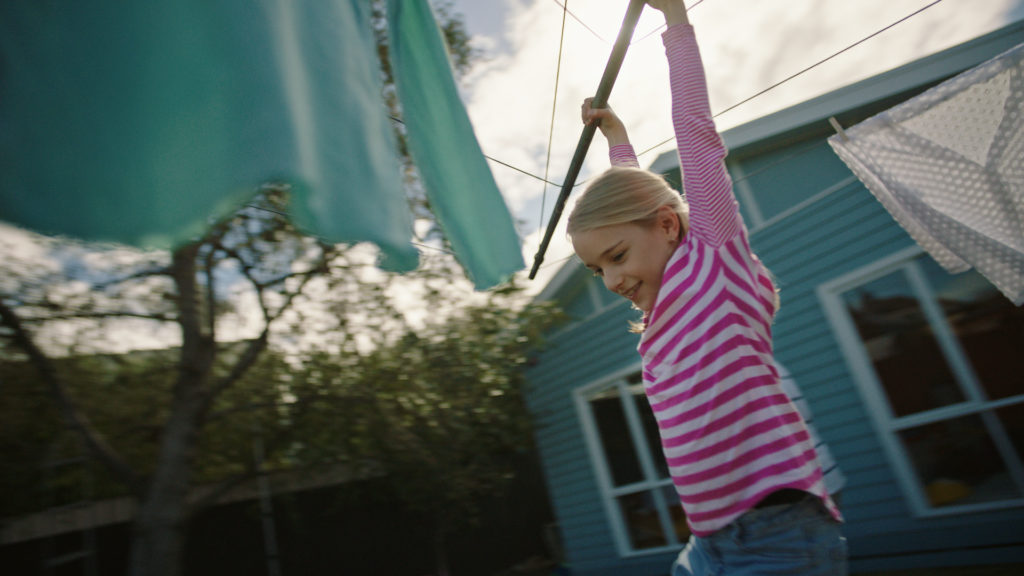
The Shots
The director wanted a series of options that captured the joy and movement of a child swinging on a clothes line. To make it happen we rigged up the camera to spin with the talent and capture the speed from the actual clothes line.
The Lighting
We made use of the angle of the sun relative to the talent and the house. We placed practical bounce elements both in and out of the shot to help get our desired ratios.
The Results


Behind the Scenes

Dad & the Mower
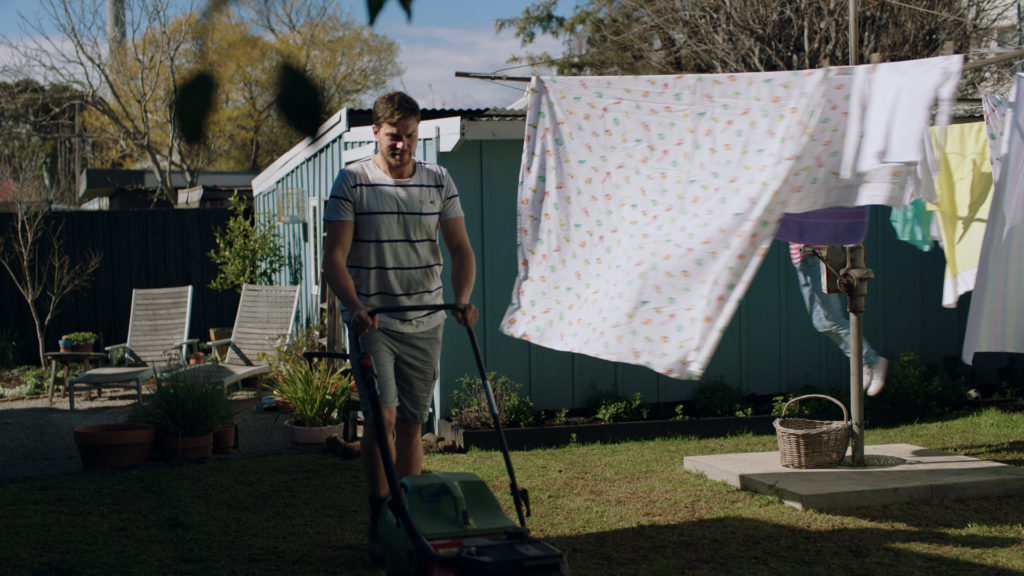
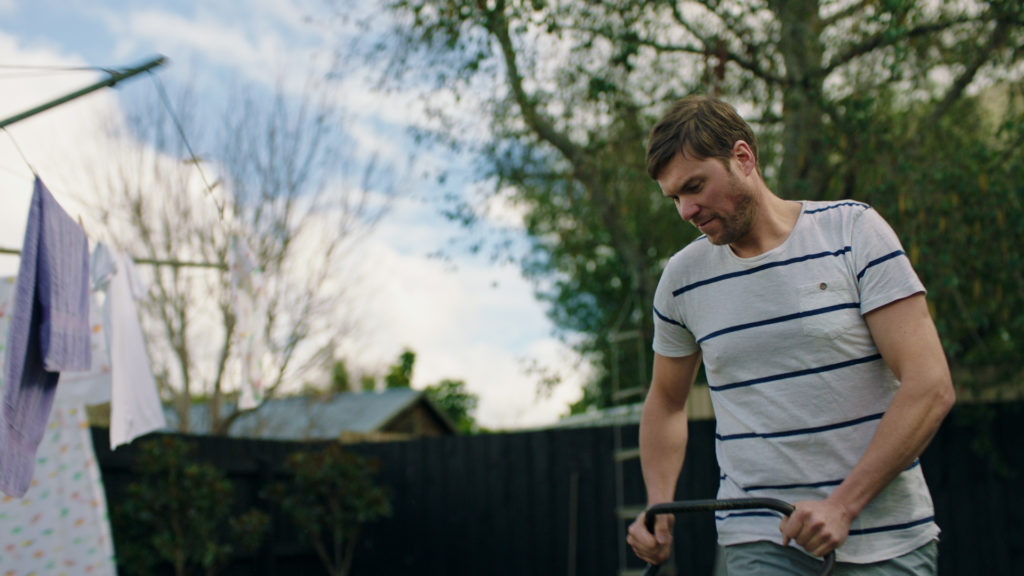
The Shots
We needed to tie the daughter on the clothes line to the father mowing the backyard.
The Lighting
This was just a game of timing and having the pieces ready to go. We waited for the sun to pop out and got a bit lucky with some blue sky in the background. The only piece added was a 12x12 of bleached muslin on the far side of the yard to help push some level back at the father.
The Results
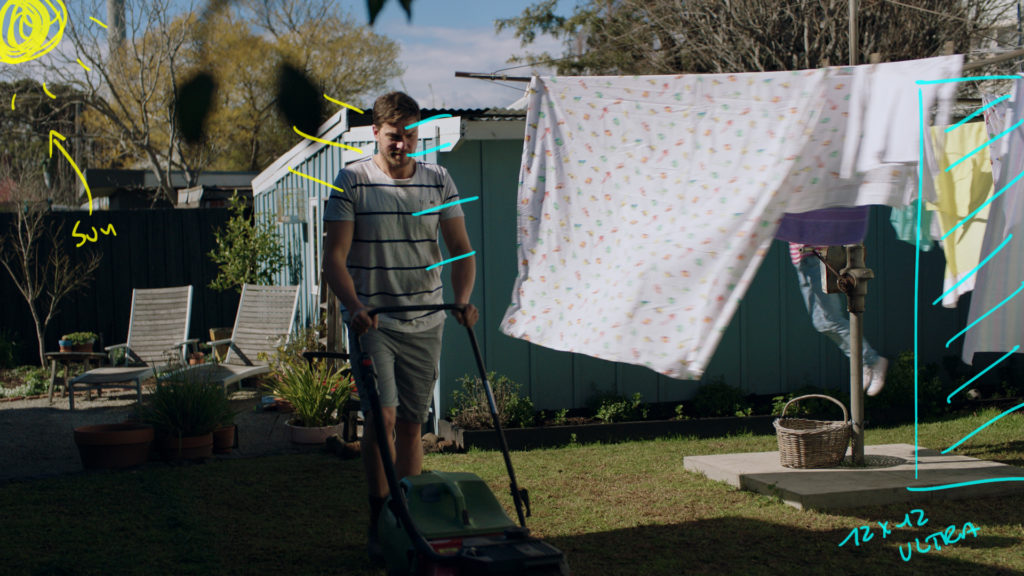
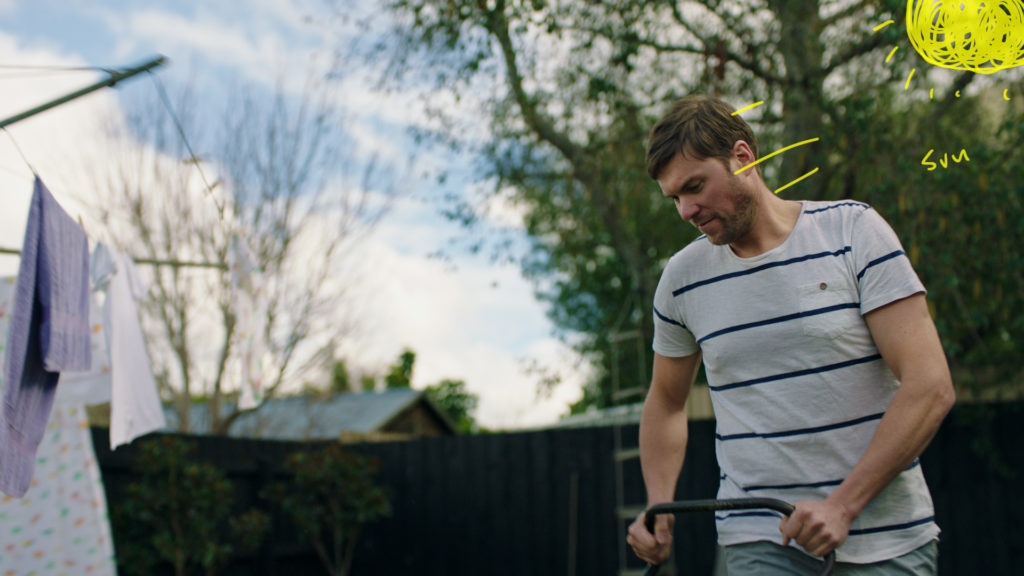
The Pack Shot - Food Cinematography

The Shot
The pack shot is the most important shot in any retail commercial spot and this was no different We needed a three shot of the various flavors.
The Lighting
To make it work we started with a large soft source (an Arri M40 through a 12x12 of Full Grid) from camera right then added a bit of an edge camera left with an Arri Skypanel through a 4x4 frame of diffusion.
For the background we had an Arri M18 pointing into the ceiling to throw a bit of neutral ambient level. Then around the front we shaped the packs with some 4x4 Floppies to help control the contrast.
The Results

Behind the Scenes
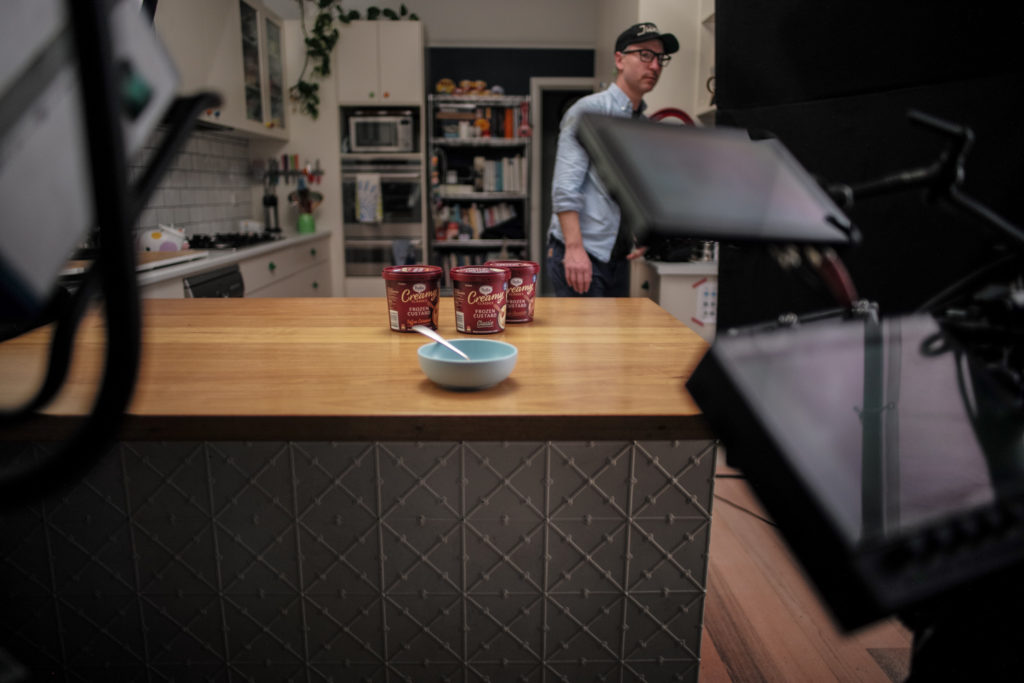

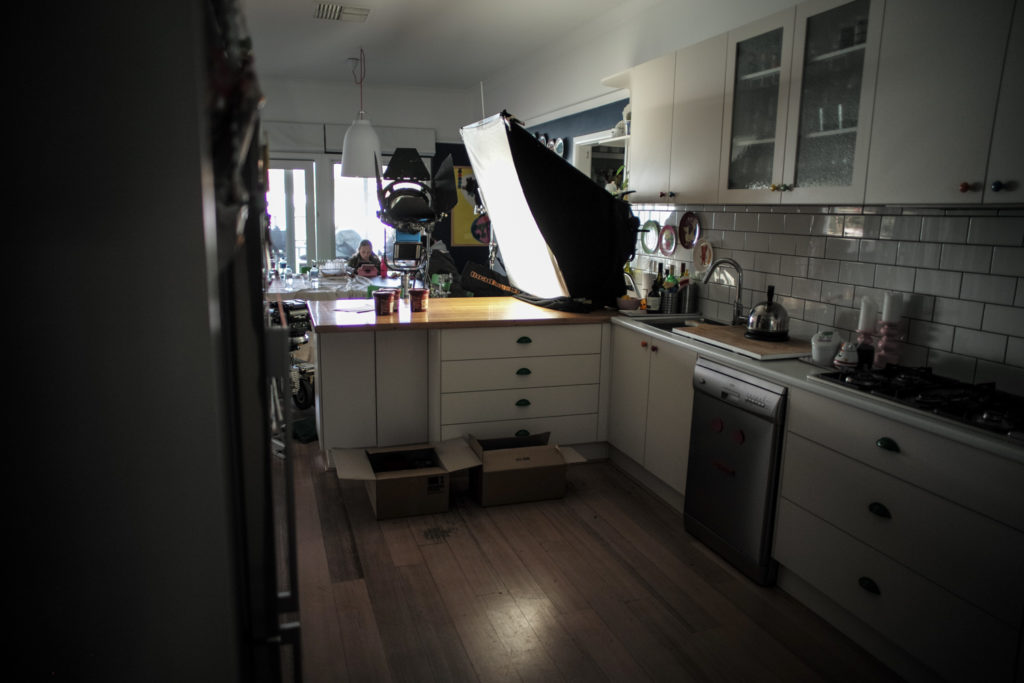
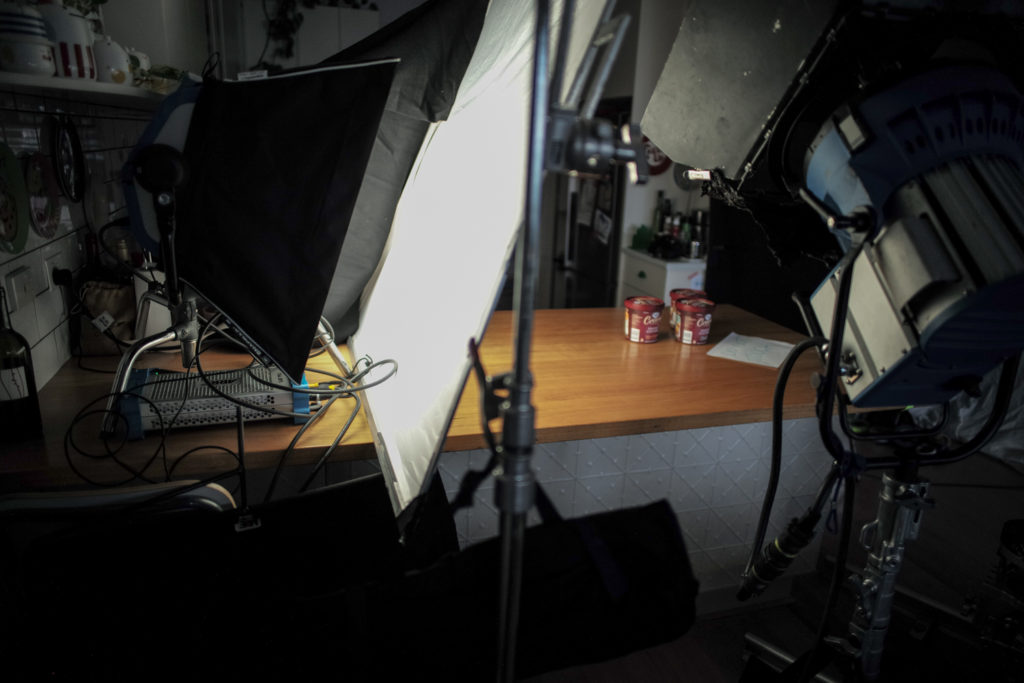
The Money Shot - The CU Scoop

The Shot
This was all about the scoop. We used the 40mm and a +2 Diopter to get in close on the action. We wanted to counter the scoop with a camera move so we went in the opposite direction with the camera sitting on the dolly.
We also shot this at 50fps to get as much useable scoop screen time as we could.
The Lighting
The lighting was very similar to the pack shot except we adjusted all the fixtures to make sure we were getting level exactly where we needed it.
Because the camera and lens were so close to the packet we added a small icelight in front of the pack to help lift the ambient on the red of the pack.
The Results

Behind the Scenes
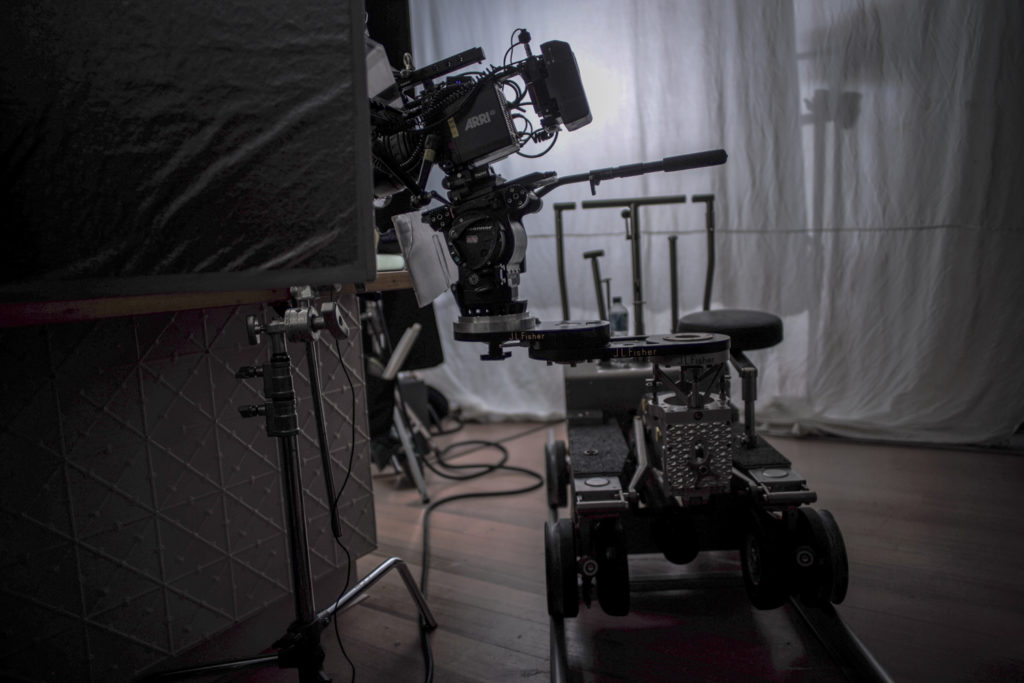
Mother in the Kitchen
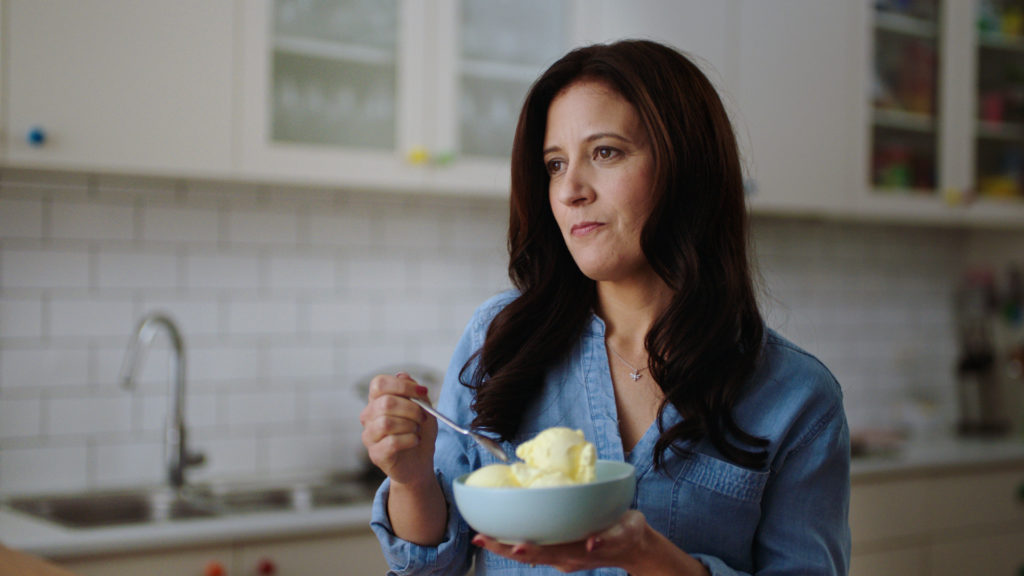
The Shot
This was the final shot of the ad. Mother in the kitchen enjoying a snack.
The Lighting
We used the same Arri M40 through the 12x12 Full grid for the key and then punched up the background with a little help from the Arri M18.
The Result
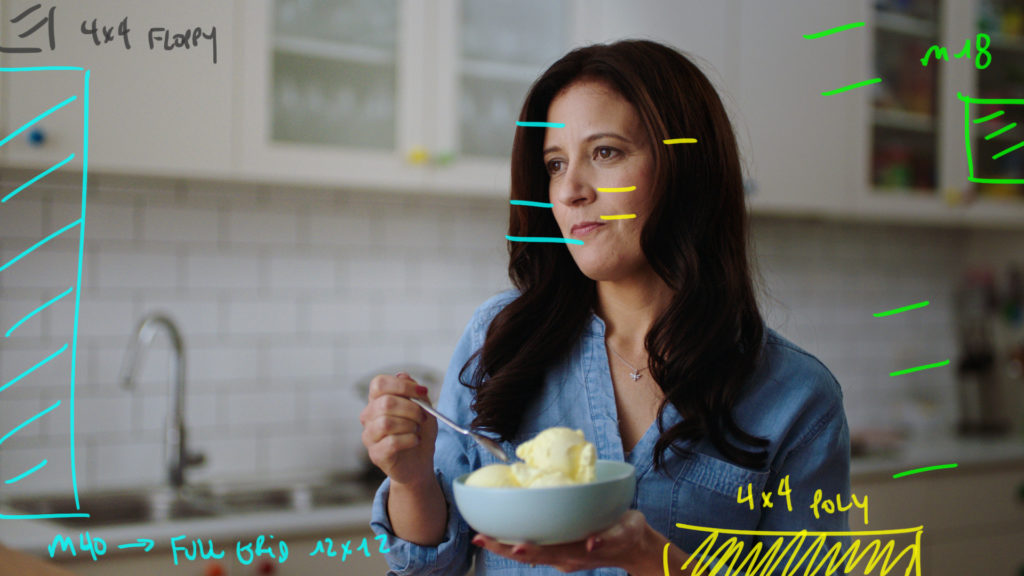
Behind the Scenes
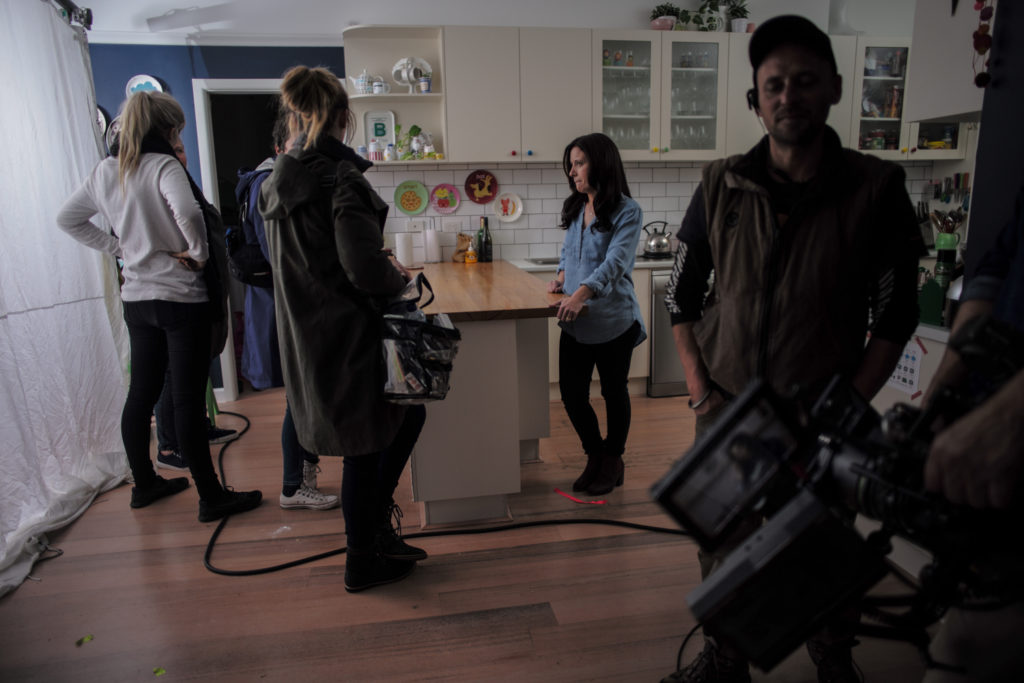
Food Cinematography - Embracing New Challenges
One of the most beautiful aspects of working as a cinematographer is always being challenged and never knowing what job will come next.
If you open yourself up to the possibilities of shooting food campaigns you will see how much fun and enjoyment can come from using your technical skills to help make a vision come to life.

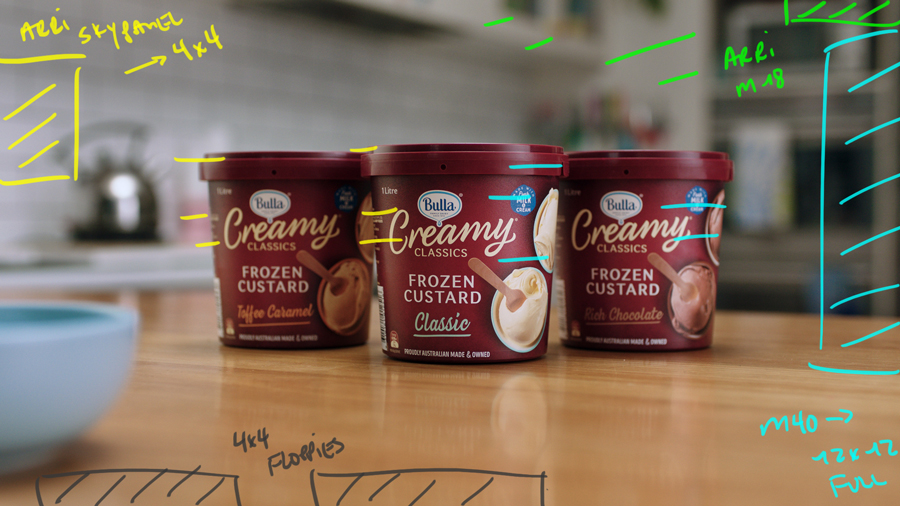
Great breakdown as always – Thank you!
This might be a foolish question, but i notice you often use an M40 on projects, even without a genny as in this one – How are you powering it from a home circuit? Are you tapping into a washer/drier hookup? Or is it just due to the voltage in Australia being double the US? (In the US an M18 usually maxes out a home circuit at 120v x 15-20amp). Thanks!